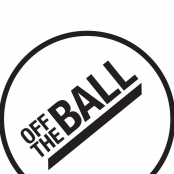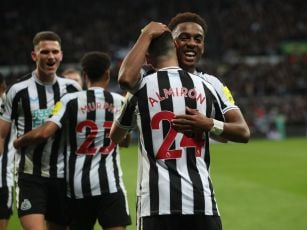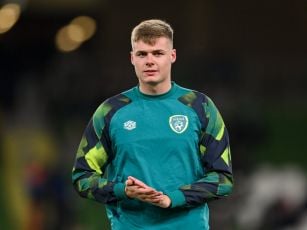The early 20th century was a fractious time in Ireland, both socially and politically.
Unemployment was high, unrest as a result of British rule was still common and for those lucky enough to have paying jobs, conditions were poor. It was not an enviable time to be an Irish man or woman.
By 1914, unrest on an entirely different scale had gripped Europe and the world was about to witness its first Great War, which would shape the continent largely the way we see it today.
Also around this, in a little corner of Dublin, Bohemian FC were were preparing to take on their arch rivals.
"There’s an interesting footnote around this time, being the Bohs-Shels game of 1913," explains Bohemians member and history enthusiast, Gerard Farrell.
"They faced each other in Shelbourne Park, the home of Shelbourne at the time. They were a Ringsend team, it would be more than 60 years before they would find themselves in Tolka Park.
"At the time, it was the launch of their ground at Shelbourne Park. They played Bohs because at the time, that was the 'Dublin Derby'. They were the two biggest, most prominent clubs.
"Shels had professional players at the time, they had begun playing professional wages around 1905. People could earn maybe £2 per-week which was significant money back then. It was a good worker's salary, better than most.
"Bohs were strictly amateur at the time and would be up until the late 1960s. So when they played, it was around the time of the beginning of the tram workers strike. Jim Larkin denounces the tram drivers as having a scab [A strikebreaker] on each team. [The Irish Worker alleges the scabs were Bohs' Jack Millar and Jack Lowry of Shelbourne.]
"There’s a picket at the game and hundreds of striking workers show up to protest outside the ground. This is supposed to be Shels big game.
"They still get a good crowd, more than 6,000 people show up. It’s packed in and at one stage protesting workers try to rush the gates of the stadium, but they’re held back. What ensues are clashes with the Dublin metropolitan police and there are guys who are seriously injured.
"A couple of days later, riots on Sackville Street take place. As a result of the riots, three people die. At the time, I don’t want to say violence was commonplace, but there was the ratcheting up of arms and violent conflict. The Home Rule bill is looking set to be passed so we’ve got guys mainly around Ulster saying they want the province to remain part of the UK. We’re going to arm ourselves and fight to keep that if necessary."
While this continued at home, battles were about to break out across the continent. C.S Andrews' Dublin Made Me at the time also pointed out that "the supporters and players of the game were exclusively of the lower middle and working classes".
This is one of the reasons why, when the Great War Broke out, many of those involved in the then-amateur Bohemian Football Club went to fight on the front lines.
"It may not just be Bohs, because if you look at it at the time football is really limited to the main football centres. Even by 1914, even though there is football being played in Cork, Waterford and Limerick, they’re only playing at local levels rather than at the elite levels.
"So people joining the war are coming from an urban working class background. In his writing, CS Andrews - who was a big Bohemians fan - said that when he would go to see Bohs it would be full of lower middle class working people. That’s the majority of the players.
"Even saying that, Bohs going back to their foundation were founded by students in a civil service college in connection with the medical professions and also connected with the British army. Guys from the Hibernian military school are also among the founders of the club.
"Bohs have a long connection with the army. There’s guys who were stationed over here who were playing football for their regiments while they are playing for Bohs."

Floodlights at Dusk over Dalymount Park. Image: ©INPHO/Donall Farmer
The Royal Hibernian Military School itself has a very sad history. The institute was essentially an orphanage for the children of dead British soldiers. They were brought up in a millitary academy and trained to be British soldiers.
"The other side of it is that going to war was very good money. If you go you have a certain income right in your hand and then your wife and your children are also guaranteed. If you have three children, you get more than if you have two children because the army is paying you for that. You don’t have to worry about your family and you get money while you’re over there to spend it on whatever you want.
"It was especially applicable for Dublin, where there was a lot of casual labour. It offers financial stability but also because Bohs had this mix of working class Dublin guys and mixed middle clash of guys born in England and Wales. They feel a duty to be involved in the army.
"Also, because of the volunteers, that there’s maybe 170,000 people involved with. Redmond went out and told them to prove they’re worthy of the freedom of their nation by showing your bravery and gallantry in France and Belgium. Some join for the idealised notion. Some join on a short service attestation - that they’ll be there until the end of the war and then they get to go home."
Football at the time offered some unity to a fractured state. In fact, Ireland at this time are perhaps the strongest they've ever been, relative to the rest of the world.
"When the war breaks out, Ireland are at their peak as a footballing nation. Football comes to Ireland in the 1870s and there’s arguments about who the first team were to set up to play it and all that sort of stuff.
"The first major club that are still around today are Cliftonville in 1878. The IFA were founded the following year making it the fourth oldest association in the world. They start playing against some of the other so-called Home Nations of England, Scotland and Wales.
"To begin with, the team are based around Belfast and the wider area around Ulster. Gradually it starts encompassing more players from the rest of Ireland. The early results are terrible. They’re beaten 13-0 on different occasions by England. But by 1914, you have a broadly representative team.
"Billy Gillespie from Donegal, Billy Lacey from Wexford. You have Val Harris who’s from Dublin and there’s a couple of Bohemians players in the Home Nations Championship squad. Ted Seymour and Bill McConnell in at centre half. You’ve a lot of players from in and around Antrim, but there are Dublin players from in and around there as well.
"As well as a few players from Galway, it’s quite a proportionate team from a representative team. They perform very well and win the Home Nations Championships. It’s important to remember that this is 16 years before there is any World Cup. The only comparative thing is the Olympics which is strictly amateur.
"So this is probably the strongest championship in the world, almost like a Six Nations, and Ireland are the champions for the first time. You could fairly honestly say that they are one of the best teams in the world at the time.
"They’ve got all of these top quality players at this time and then all of a sudden, war breaks out. Players leave for the front. But in Ireland, they continue on the domestic season and carry on playing into 1915."
You can hear the full discussion with Farrell and Newstalk.com's Cian Roche by clicking the link below.
Download the brand new OffTheBall App in the Play Store & App Store right now! We've got you covered!
Subscribe to OffTheBall's YouTube channel for more videos, like us on Facebook or follow us on Twitter for the latest sporting news and content.








